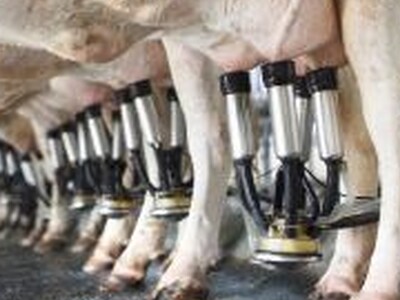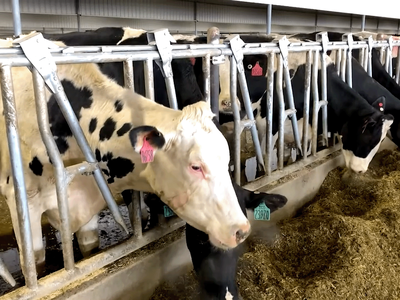BSE Update
BSE Update. I’m Greg Martin with today’s Line On Agriculture.
The investigation continues into the 4th case of bovine spongiform encephalopathy or BSE in the U.S. It was discovered in a central California dairy cow. Another dairy operation has been quarantined as well. USDA's Chief Veterinary Officer Dr. John Clifford updates us.
CLIFFORD: Of the last two years of the progeny of this cow, one of those animals was stillborn and the other animal we were able to locate and we appraised that animal and humanely euthanized that cow and sampled the animal for BSE and those test results have found to be negative for BSE.
Dr. Clifford says they have pulled together a number of state agencies to look into the situation.
CLIFFORD: In addition we are working very closely with Food and Drug Administration on the feed investigation as well as close collaboration with California Department of Food and Agriculture.
The cow was discovered in the third part of a 3-pronged interlocking system to make sure no cases of BSE get into the food supply.
CLIFFORD: Our program has three primary areas of focus and we removed the specified risk materials for human health. That’s overseen by Food Safety Inspection Service. We do the feed ban to protect animal health by FDA and we do the surveillance of 40-thousand samples to make sure that we can monitor and make sure our mitigations are working. And I think we have a good surveillance system and we’re able to detect the disease at least an area of one or below one case per million adult cows. There’s about 40-million adult cows in the United States so I have a great confidence in our system and our product is safe.
He also notes that at no time did this particular animal pose any threat to the food supply and never entered the food chain. BSE is also incorrectly called mad cow disease and can cause infected animals to display nervousness or aggression, difficulty in coordination and standing up, decreased milk production or weight loss. In people, symptoms of the disease include psychiatric and behavioral changes, movement deficits, memory disturbances and cognitive impairments. An outbreak in the late 1980’s and 90’s in Britain was the cause of some 150 deaths.
That’s today’s Line On Agriculture. I’m Greg Martin on the Ag Information Network.


















